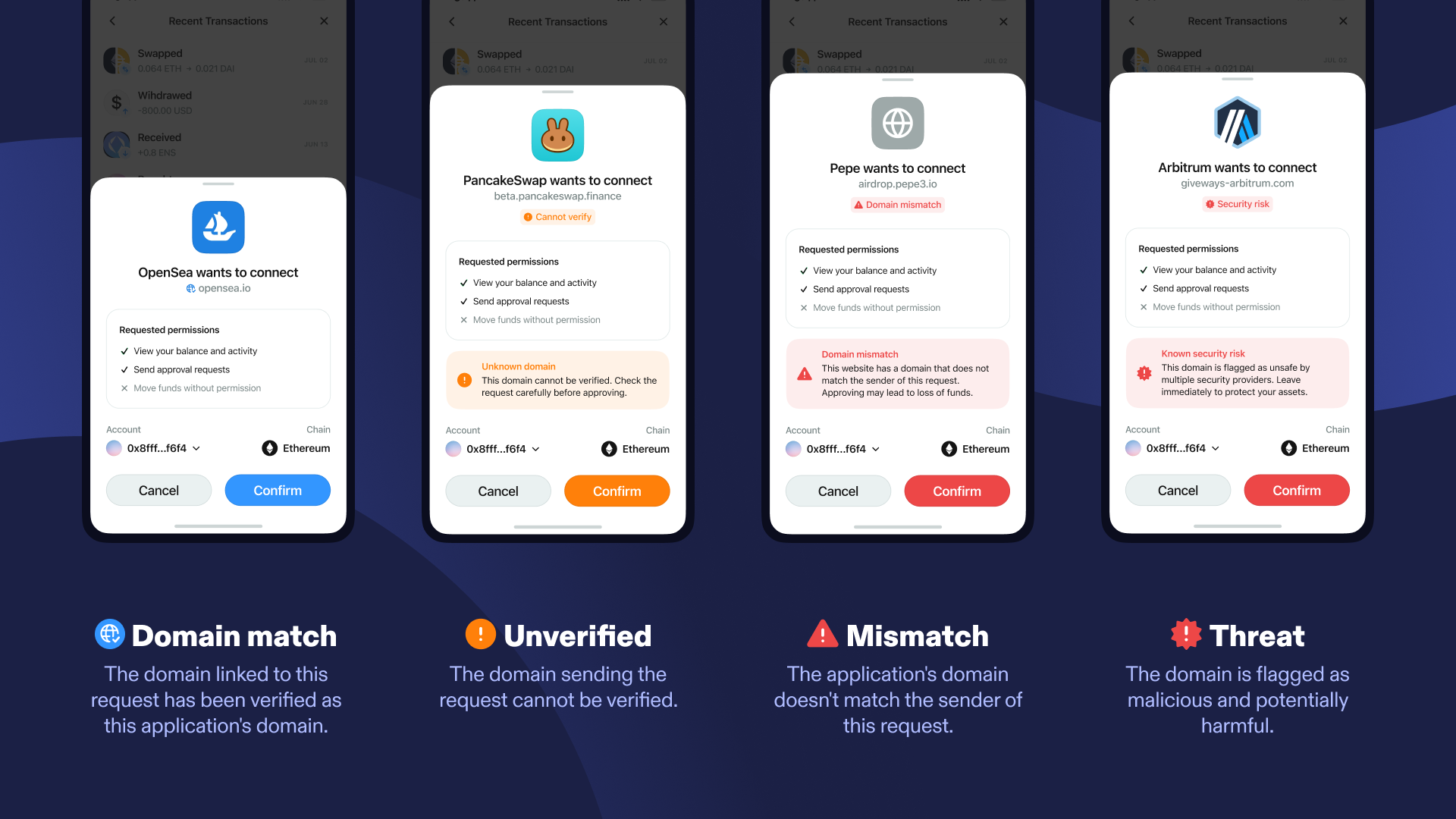
Disclaimer
Verify API is not designed to be bulletproof but to make the impersonation attack harder and require a somewhat sophisticated attacker. We are working on a new standard with various partners to close those gaps and make it bulletproof.Domain risk detection
The Verify security system will discriminate session proposals & session requests with distinct validations that can be eitherVALID, INVALID or UNKNOWN.
- Domain match: The domain linked to this request has been verified as this application’s domain.
- This interface appears when the domain a user is attempting to connect to has been ‘verified’ in our domain registry as the registered domain of the application the user is trying to connect to, and the domain has not returned as suspicious from either of the security tools we work with. The
verifyContextincluded in the request will have a validation ofVALID.
- This interface appears when the domain a user is attempting to connect to has been ‘verified’ in our domain registry as the registered domain of the application the user is trying to connect to, and the domain has not returned as suspicious from either of the security tools we work with. The
- Unverified: The domain sending the request cannot be verified.
- This interface appears when the domain a user is attempting to connect to has not been verified in our domain registry, but the domain has not returned as suspicious from either of the security tools we work with. The
verifyContextincluded in the request will have a validation ofUNKNOWN.
- This interface appears when the domain a user is attempting to connect to has not been verified in our domain registry, but the domain has not returned as suspicious from either of the security tools we work with. The
- Mismatch: The application’s domain doesn’t match the sender of this request.
- This interface appears when the domain a user is attempting to connect to has been flagged as a different domain to the one this application has verified in our domain registry, but the domain has not returned as suspicious from either of the security tools we work with. The
verifyContextincluded in the request will have a validation ofINVALID
- This interface appears when the domain a user is attempting to connect to has been flagged as a different domain to the one this application has verified in our domain registry, but the domain has not returned as suspicious from either of the security tools we work with. The
- Threat: This domain is flagged as malicious and potentially harmful.
- This interface appears when the domain a user is attempting to connect to has been flagged as malicious on one or more of the security tools we work with. The
verifyContextincluded in the request will contain parameterisScamwith valuetrue.
- This interface appears when the domain a user is attempting to connect to has been flagged as malicious on one or more of the security tools we work with. The
Implementation
To check the Verify API validations and whether or not your user is interacting with potentially malicious app, you can do so by accessing theverifyContext included in the request payload.
- Demo Wallet
- Demo App - you can toggle between the verify states by clicking on the
gear& selecting the decided Validation before connecting to the wallet - Demo Malicious App - this app is flagged as malicious and will have the
isScamparameter set totruein theverifyContextof the request
